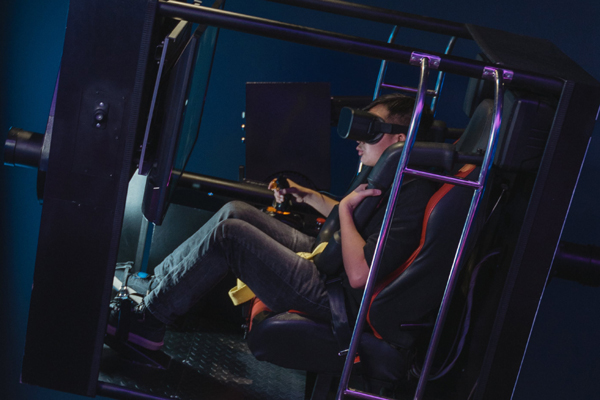1. Virtual Reality (VR) and Augmented Reality (AR):
- VR and AR have revolutionized entertainment by providing immersive experiences. VR allows users to enter a virtual world, while AR overlays digital elements on the real world. This technology has been used in gaming, interactive storytelling, and live events.
2. Interactive Exhibits and Installations:
- Museums and galleries have adopted interactive exhibits and installations that engage visitors in unique ways. Touchscreen displays, motion sensors, and augmented reality apps enhance the viewer's experience and understanding of art.
3. Live Streaming and Virtual Concerts:
- Live streaming has become a popular way to broadcast events and performances to a global audience. Musicians and bands have embraced virtual concerts, giving fans the opportunity to attend live shows from the comfort of their homes.
4. 3D Printing in Art:
- 3D printing has opened up new avenues for artists to create intricate sculptures and unique pieces. It allows for complex and detailed art forms that were previously difficult to achieve.
5. AI-Generated Art and Music:
- Artificial intelligence is being used to generate art and music. AI algorithms can create original compositions, paintings, and sculptures, often in collaboration with human artists.
6. Immersive Theater:
- Immersive theater productions blur the lines between the audience and the performance. Audiences become active participants, shaping the narrative and interacting with the actors in real-time.
7. Online Streaming Platforms:
- Streaming platforms like Netflix, Amazon Prime, and Disney+ have transformed the film and TV industry, offering a vast library of content on-demand. They've also invested in original content production.
8. Video Game Crossovers:
- Video games have increasingly crossed over into film and TV. Popular games like "The Witcher" and "Assassin's Creed" have been adapted into successful television series.
9. Holographic Performances:
- Holographic technology has been used to resurrect late musicians like Tupac Shakur and Michael Jackson for live performances, creating surreal and nostalgic experiences.
10. Blockchain in Art: - Blockchain technology is being used to verify the authenticity of art and collectibles. It creates digital certificates of ownership and provenance, ensuring transparency and security in the art market.
11. Gamification of Music and Art Creation: - Apps and software have made music and art creation accessible to a broader audience, allowing users to experiment and create their own works.
12. Environmental and Sustainable Art: - Artists are exploring eco-friendly materials and themes related to sustainability and environmental conservation in their work.
13. Interactive Storytelling in Film and TV: - Interactive films and TV shows, such as Netflix's "Bandersnatch," allow viewers to make choices that impact the storyline, offering a unique viewing experience.
14. Virtual Museums and Galleries: - Online platforms provide virtual tours of museums and galleries, allowing people from around the world to explore famous institutions and exhibitions.
15. Mixed Reality (MR): - MR combines aspects of both VR and AR, enabling digital objects to interact with the real world in real time. This technology is used in entertainment, education, and training.
Innovation in the arts, music, film, and entertainment industries continues to evolve, offering fresh and exciting experiences for audiences and pushing the boundaries of creativity and technology. These innovations enrich our cultural landscape and open up new possibilities for artists and performers.




Comments (0)